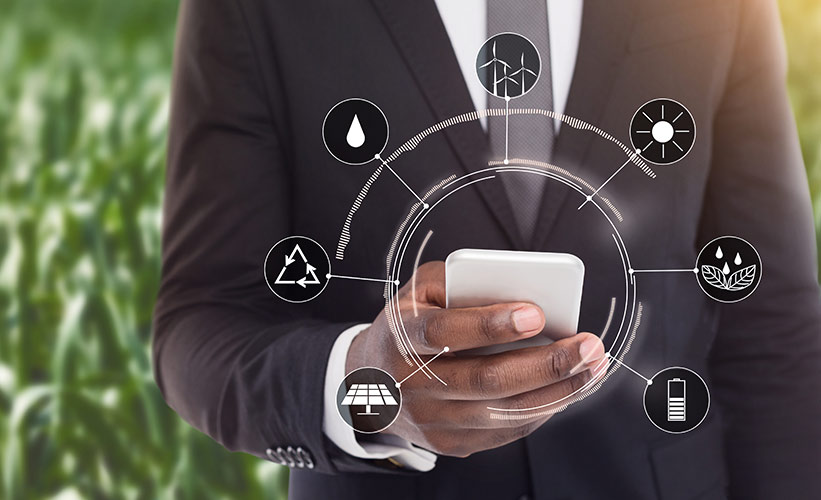Reducing global emissions through connectivity

There are two main dimensions to Telenor’s work on climate and environment. The first is to clean up our own operations, by lowering GHG emissions and improving environmental performance. The second is to help other parties reduce their emissions, by way of Telenor’s services.
As highlighted in Telenor’s TCFD climate risk assessment (Task Force on Climate-related Financial Disclosures), multiple climate risks exist for Telenor and ICTs more broadly. However, our TCFD assessment also clearly points to emission reducing ICT services or “climate enabling technologies” as a significant opportunity. In demonstrating the effect of emission reducing technologies, Telenor and the ICT industry can easier live up to the claim of being part of the solution to mitigating climate change.
The ability of ICT companies to positively contribute to climate and environmental issues challenging the world is a central premise of the digital transformation, the EU green deal and many other initiatives. As such, the ICT industry must demonstrate higher emission reductions enabled in other sectors than its own emissions. The GSMA study The Enablement Effect, publicised in 2019, stated that the total annual emissions of the mobile sector are approximately 220 MtCO2 (~0.4 per cent of total global emissions), whilst the climate enablement effect could be ten times as high.
One of the technologies that will be central to using connectivity to improve environmental performance and reduce GHG emissions, is IoT, or Internet of Things. Telenor Connexion is our company’s spearhead in developing new enabling services in this domain. As one of its reference cases, Telenor Connexion has worked with Grundfos in developing water management technology. The company has also worked with Ningbo Sanxing in connecting 1 million smart meters, delivering environmentally friendly electricity consumption services. As this sector develops, IoT technology will be increasingly integrated into smart electrical grids for renewable electricity, green building infrastructure and waste management systems and flexible working solutions to name just a few.
How much GHG emissions are avoided due to these technologies? These are pressing questions and efforts must be employed to increase accuracy in quantifying said effects. Measuring the contribution the ICT sectors has in mitigating global warming and environmental issues is a challenging process, lacking standardisation, clarity and research. To address these challenges, Telenor Group joined the newly formed European Green Digital Coalition, an initiative from the EU Commission, which will be looking at how to expedite the climate enablement effect of the ICT sector. One key objective of this group is to investigate how to measure and quantify enablement effects and address the question of “how does the ICT industry reduce emissions through connectivity?” At Telenor, we are looking forward to playing a part in taking this challenge forward.